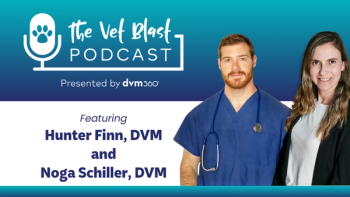
Pain management helps preserve client base, expert tells CVC attendees
From a pain practitioner's standpoint, it's much better for a practice to provide more service to existing clients than try to compete for new ones when patients die before their time. That was one of two key take-home points Robert M. Stein, DVM, Dipl. AAPM, pain specialist and president of the International Veterinary Academy of Pain Management (IVAPM), offered CVC Kansas City attendees Sunday morning during his presentation, "A day in the life of a pain practitioner," part of the IVAPM Symposium at CVC Kansas City. Stein practices in suburban Buffalo, N.Y.
Kansas City
- From a pain practitioner's standpoint, it's much better for a practice to provide more service to existing clients than try to compete for new ones when patients die before their time.
That was one of two key take-home points Robert M. Stein, DVM, Dipl. AAPM, pain specialist and president of the International Veterinary Academy of Pain Management (IVAPM), offered CVC Kansas City attendees Sunday morning during his presentation, "A day in the life of a pain practitioner," part of the IVAPM Symposium at CVC Kansas City. Stein practices in suburban Buffalo, N.Y.
"Currently, dog and cat patients are lost an average of nine to 18 months before their time - my crude estimation based on what we've seen with our patients. That's a crime for the many clients who consider their pet one of the most important, if not the most important, relationship they have. It is not easy for the practice to find replacements for lost patients. Better to provide more service to your current ones than look for and compete for new ones," Stein says.
Stein's second take-home message is that "better pain management is the foundation of safer anesthesia and a work smarter, not harder, practice philosophy."
Despite increasing interest and acceptance, pain management is still in its infancy, Stein says, and is "quite the work in progress. We are currently very fragmented."
He defines a pain practitioner as one who has studied, at a minimum, the neurobiology of pain, medication-based pain therapy, physical rehabilitation and acupuncture, and understands that pain management is a multidisciplinary process.
"They have attended introductory courses of each discipline, even if they don't intend directly to provide that kind of care," Stein says.
A veterinary pain practitioner, he explains, is part of a network that should include physical therapists and physicians that practice pain management. "And he or she sees patients with pain and dysfunction while managing their practice, exploring a whole new veterinary business model."
In the veterinary academic world, students often receive very limited, if any, training in outpatient pain practice, rehabilitation and acupuncture exposure, Stein says, adding that "we're just scratching the surface of diplomates with pain-oriented skills entering private practice."
General veterinary practitioners are becoming more comfortable with a broader range of allopathic medications, but often have little feel for rehabilitation and acupuncture, and some are even reluctant to refer patients to pain specialists who offer acupuncture therapy, Stein says, adding that the culture needs to change.
The developing veterinary pain practitioner must recognize the need to immerse himself or herself in an ongoing educational process, even after his or her foundational training in the three main disciplines of allopathic medication, physical rehabilitation and acupuncture, Stein says.
They must then regularly monitor new information that is available through several channels, some of which he enumerated for CVC attendees.
Stein then described the types of patients a pain practitioner might see, the principles that dictate the diagnostic process, a typical pain-management sequence of treatment and some difficult elements that may be encountered.
"The principles of pain management dictate that the best possible diagnostics be focused on the most accurate possible diagnostic process, while the realities of veterinary medicine may well limit the extent of that process," Stein says. "The impressions of the referring DVM may not always hold up on review," he says.
For veterinary pain management to keep progressing, "one responsibility that cannot be overstated is the need for those possessing better pain-management awareness and skills to help support and coach their fellow veterinary professionals. That is a multi-faceted challenge," Stein adds.
Newsletter
From exam room tips to practice management insights, get trusted veterinary news delivered straight to your inbox—subscribe to dvm360.




